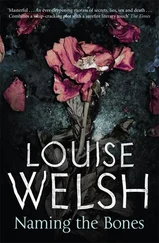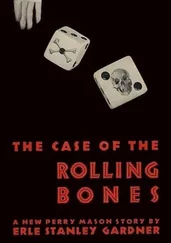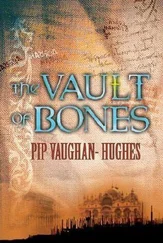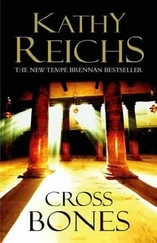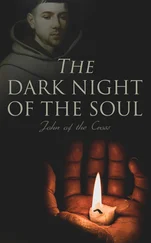It was no good. The major directed the bench to find him guilty of theft and he was sentenced to three months banging metal panels in Norwich Prison. But while giving his summing-up, the major made a point of saying the purloining of property from Church premises must be discouraged in the parishes and he himself was the man to do it. Listen to him: ‘We need a tighter deployment of manpower to ensure no recrudescence of such casual felonies. If the church warden at Blakeney were doing his job, this unfortunate youth would not now be losing his liberty. The work of a churchwarden must not be undertaken lightly. I shall be looking into the current arrangements in all the outlying parishes of north Norfolk, and recommending changes.’ Which was pretty well saying, ‘ME! Me, I’ll be churchwarden around here. Just you try and stop me.’
What Mr Reynolds, our churchwarden these twenty-three years, will make of it, I cannot imagine. He and Mrs R have been our neighbours and best friends as long as we’ve been in the village. Mr Reynolds is a dear, good man, a devout churchgoer and helpful handyman. He is not equipped to fight the likes of the major, with his fearsome eye and the broken veins in his cross old face, and his blustering ambitions and his running the bench like some American lawman.
There will be a fight, mark my words. As I told you, there’s no love lost between him and H and I’m fearful of the outcome. In fact, Oona dear, I think I’ll go round to the Reynoldses right this minute, so had better close. Write and tell me all the news from Dublin. God, I miss the place something awful, these days, I get so lonesome with H away so much. But maybe at least Mr R will have a screwdriver to save Mrs Maitland’s blushes.
Your loving friend,
Mimi
Journals of Harold Davidson
London 19 August 1930
Set out this morning to find poor Emily. Took the omnibus from Waterloo Station north to Islington Green. Had only sketchy information from Nellie Churchill, whom I left slumbering. I asked many strangers for Herbert Street and was rewarded with directions to all four points of the compass.
New shops are springing up all along Upper Street – furniture and brass appliances, dresses and hats and bolts of silk and cotton, pie and sweetmeat emporia, ironware, stationery, wine and cigars. A gratifying sign of prosperity in these doldrum times. We may not be suffering a Depression as badly as has befallen our friends in the United States, but we are far from enjoying an Elation. A new world of things, though, an outbreak of colours, can be relied upon to raise the spirits. Who would have thought the eye could be so thrilled by the sunlight gleaming on a mass of brand-new copper piping in Balcombe’s Yard, or the heart so lifted by the sight of a paint lorry unloading vats of pigment, their lids leaking creamy half-moons of crimson, yellow and aquamarine?
Speaking of our transatlantic cousins, a potent image of their current state of mind has appeared in the window of the Gilbert Gallery, on Essex Road. It is a new painting called American Gothic by Mr Grant Wood and depicts a poor farmer, presumably from one of the ‘Dustbowl’ states, standing in front of his run-down homestead with his helpmeet by his side. They are clearly a long-married couple but there is something severe and unyielding about the man’s looks – an unappeasable steel in his eyes, a cruelty of aspect symbolised by the pitchfork he holds – that is matched by the indomitable gracelessness of his lady wife. One extends Christian sympathy for their resilience in the face of poverty, yet one also feels sympathy for anyone dependent on their assistance, or indeed their hospitality, for five minutes.
But the title, American Gothic? I know only a Gothic style of church architecture, popularised by Mr Pugin and characterised by spires and spikes, whether on arches, windows, doorways or ceilings. What application can the word have to this portrait, unless to suggest that the Church in America is in the hands of these unsmiling (and incontrovertibly spiky) rustics?
And the Church of England? What arrangement of features, what painted, unsmiling visage would sum up the Church today? Why, surely a portrait of my old friend Cosmo Lang, once the greatest duffer that ever tried to construe Catullus in front of a teacher, more recently famous as the holder of the highest religious seat in the country. In this notional picture, he would be seated on a throne, noble as St Peter, arrogant as Saul and all-conquering as Neptune, fingering the purple satin of his archiepiscopal glory, luxuriating in his triumph, wholly unable to see how the vast majority of his co-religionists live, on the long flat shore between need and comfort.
Cosmo Lang, well, well. I simply cannot understand his elevation to the See of Canterbury, and his pre-eminence over all of us. I am reminded of what F. E. Smith, the Earl of Birkenhead, as a young advocate, said to a judge one day, when he had inadvertently begun to instruct the jury on their duty. ‘What do you suppose, Mr Smith,’ said the judge, ‘I am doing here on this bench?’ ‘It is not for me, Your Honour,’ Smith replied, ‘to attempt to fathom the inscrutable workings of Providence.’ Quite so.
Half a mile down the Essex Road, I found a Herbert Street, but no number 140 or 142. Instead, a dismal terrace of small stucco houses petered out into a ghost estate of shuttered and condemned hovels. I had been directed to the wrong street. Tsk. I uttered a silent prayer for Emily, and set off again. Seven streets later, a friendly publican cashed a cheque for me and, on hearing my enquiry, said there was a Halberd Street not half a mile away. My satisfaction at the news was tempered by the wretched environs through which I passed on the way. The hovels of Herbert Street were like the Taj Mahal, compared to the sights which now met my eyes.
The cramped rows of two-storey brick houses – acres of them, winding into the distance like a hope fading into the future – were bad enough. So were the stinking courtyards I passed, pieces of wasteland randomly flooded with pools of stagnant water and, here and there, the backwash from the sewage. So were the horrid cellars I glimpsed from the pavement as I passed – dreadful, Miltonic catacombs, seen but peripherally, before one’s eye recoiled in horror from the upturned faces below, the dim lights in the gloom of noonday, the white limbs seen through the gratings, the grim sense that perhaps a dozen human souls must live and have their being down in these shabby dungeons. I nearly turned back in despair and headed for the cheerful daylight of Essex Road. But I prayed to St Jude, patron saint of lost causes, to steady my resolve.
The worst was soon upon me. Round the corner of Halberd Street, looming over it like a beetling grey cliff, a huge tenement building, six storeys high, reared up from the pavement. There was no front door in this cliff of masonry – or rather, there were several doors but none that would admit a caller from the street. Instead, the vile construction spread tentacular concrete legs, each entwined by a mass of spiral stairwell, over half an acre of land. Through pillars, archways and walkways, one could catch glimpses of the dwellers in this morale-sapping prison. I went in as far as I could bear, and found a dozen grubby children, no more than three or two years old, playing on the stone stairs, their jerseys streaked with what I hoped was mud, their ears assaulted with the hiss and whine of the gas jets that lit their greasy faces like Caravaggio beggars.
They had no sky to look out upon, no sun or moon to tell them it was day or night, no sight of grass or river, nothing of the outside world to meet their eye, only more concrete roofs and angles, walls and stairs, gas jets and hellish courtyards. Wherever they looked, blankness looked back at them.
Читать дальше

